“Not only is it a classic from the maker’s ‘golden era,’ but it wears a rare Bonni Pink finish that comes with its own story”: The pretty-in-pink PRS Custom 24 “Bonni Pink” guitar is a stunning example of Paul Reed Smith's cornerstone model
Dedicated to a longtime PRS employee, the extremely flamey maple top, distinctive finish, and Paul Reed Smith autograph mark this guitar as a rare – and highly alluring – early PRS by any measure
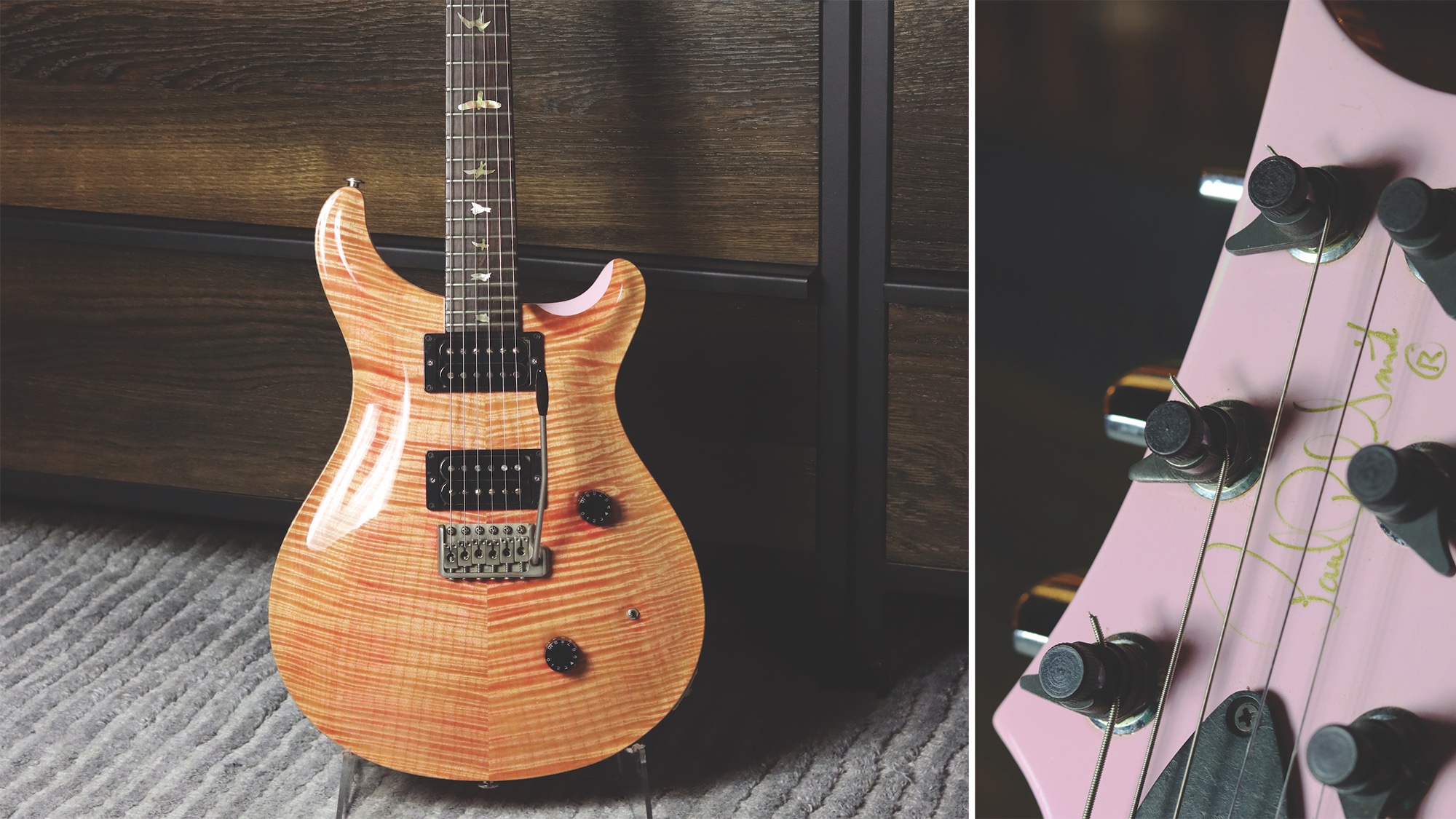
When American guitar brands suffered a dip in quality during the 1970s and ’80s, the door was open for guitar rivals to make inroads to the U.S. market.
While many of them came from Japan, at least one homegrown guitar maker saw his “in”: Paul Reed Smith. With his PRS Guitars, Smith hit the ground running in 1985, creating widely acknowledged “modern classics,” and he’s been accepted as another of the United States’ leading guitar makers ever since.
The 1989 Custom 24 featured here was built just a few years after PRS established proper production but before its guitars were commonplace in dealerships across the country. Not only is it a classic from the maker’s “golden era,” but it wears a rare Bonni Pink finish that comes with its own story.
Having played guitar in his youth, Smith built his first guitar in 1975 while in college, an adventure that inspired him to drop out and work full-time as a luthier and repairman. A boatload of research and experimentation went into the effort over the next 10 years, during which he built an average of one guitar a month, until funds were in place for him to open the first PRS factory, in Annapolis, Maryland, in 1985.
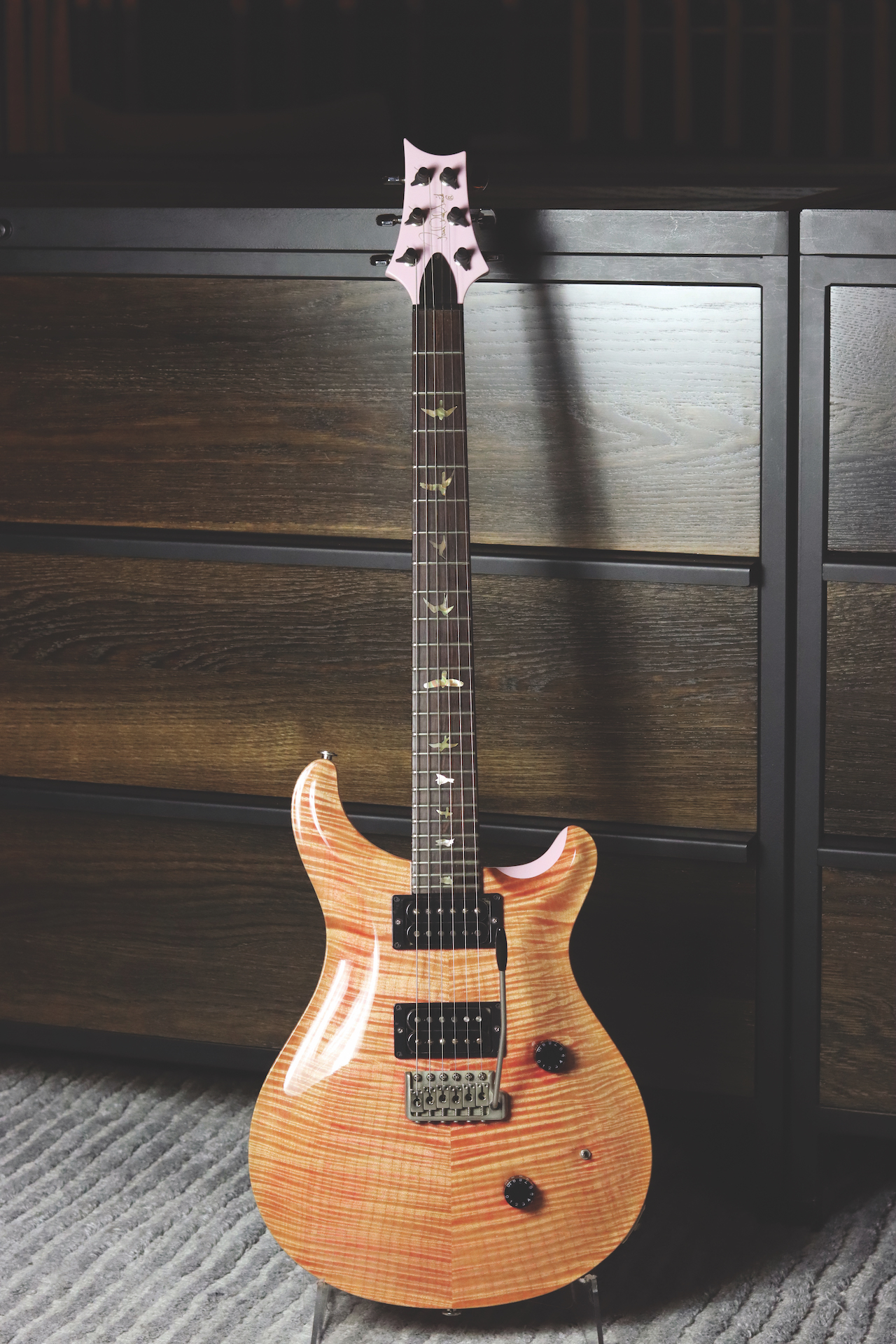
But shortly before then, the budding entrepreneur had tested the waters by buttonholing roadies at backstage doors, guitar in hand, to get touring stars to check out his work.
The effort succeeded and proved the viability of Smith’s designs. He quickly received preproduction orders from such stars as Heart’s Howard Leese, Peter Frampton, Al Di Meola and, eventually, Carlos Santana, allowing the PRS factory to fire up with a substantial artist roster in place.
Although they’re familiar to most guitarists today, the features of Smith’s core design were innovative. Significant among these were:
Get The Pick Newsletter
All the latest guitar news, interviews, lessons, reviews, deals and more, direct to your inbox!
• A hybrid Fender-meets-Gibson ethos that ran throughout the design, affecting both styling and build;
• A glued-in neck with a hybrid 10-inch fingerboard radius and 24 frets;
• Optional bird inlays in the rosewood necks (often Brazilian rosewood, until around 1990);
• A 25-inch scale length that made it easy for players of other makes to adapt readily to PRS guitars;
• Versatile five-position rotary switching with pickups wired to access both humbucking and single-coil tones;
• A back-angled headstock with a three-to-a-side tuner layout designed to enable a straight string pull over a low-friction nut, to maximize tuning stability;
• A floating vibrato bridge that stayed in tune with liberal use, as requested by Santana;
• Highly figured maple tops in faded sunburst finishes, as seen on some of the most prized late-’50s Les Pauls.
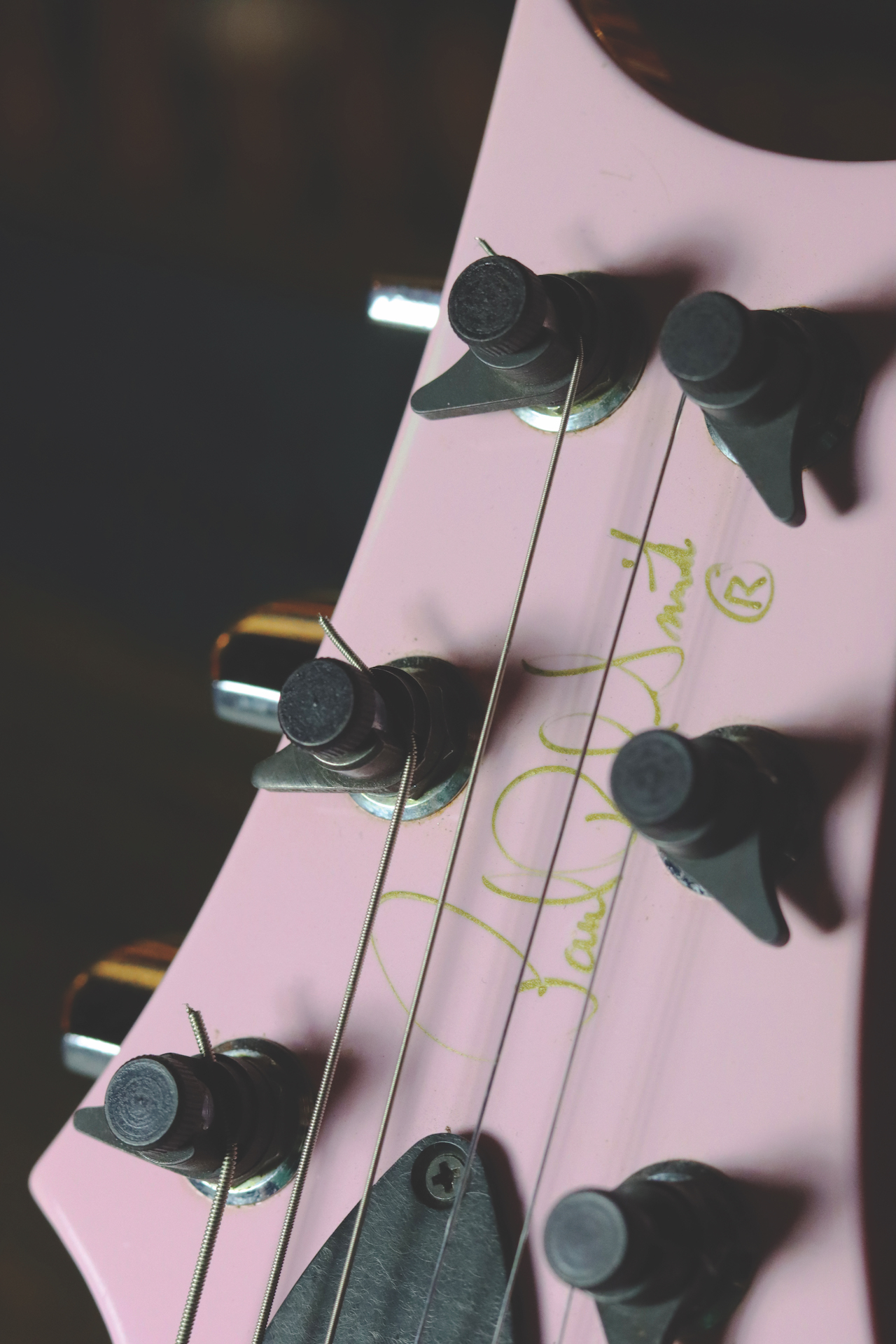
It all added up to a thoughtful redrawing of the electric guitar’s blueprint, one that applied logic and creative design principles to the matters of playability, tone, and tuning stability, rather than merely copying the classics that had come before.
In addition to the attractive top woods, PRS carefully selected the mahogany he used for the guitars’ backs and necks while making the body backs slightly slimmer than those of the Les Pauls they partly resembled. The resulting lighter weight, along with a rounded contour in the ribcage position, made the guitars more comfortable to play than many of the set-neck, single-cutaway creations of the day, which were often quite heavy.
Introduced in 1985, the Custom 24 was PRS’s cornerstone model, and it embodied all the significant features detailed above, plus others. A more upscale Signature Series (hand-signed by Smith) was offered from 1986 to ’90, and carried the ultimate woods and appointments. After some 1,000 examples, this upgraded line was renamed the Artist Series, and has since evolved through several iterations.
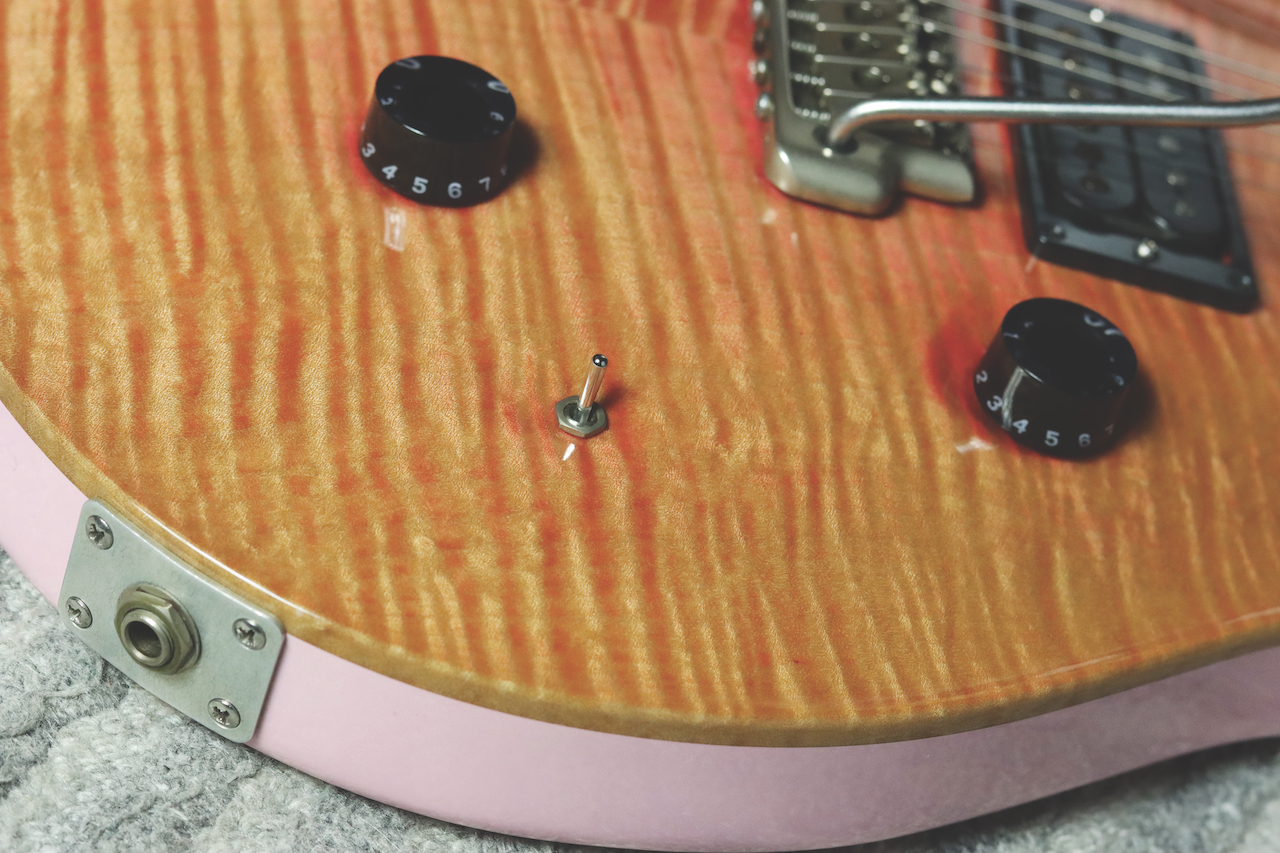
The distinctive Bonni Pink finish on our featured 1989 Custom 24 Signature model was based on an early guitar rendered in the same aesthetics for Bonni Lloyd. A PRS employee, Lloyd worked in artist relations and marketing for Smith prior to the company’s establishment and again between 1986 and ’99.
The extremely flamey maple top and Paul Reed Smith autograph mark this example as one of the exalted Signature Models, while the distinctive finish makes it a rare – and highly alluring – early PRS by any measure.
Another characteristic of early PRS guitars is found in that small mini-toggle switch, which partnered the master volume control with the rotary pickup selector (the latter can be easily mistaken for a tone control in these photos if you didn’t know otherwise). PRS dubbed this the Sweet Switch, and it was designed to re-create the so-called tonal “sweetening” of the treble roll-off that is experienced when a long cable is used from guitar to amp.
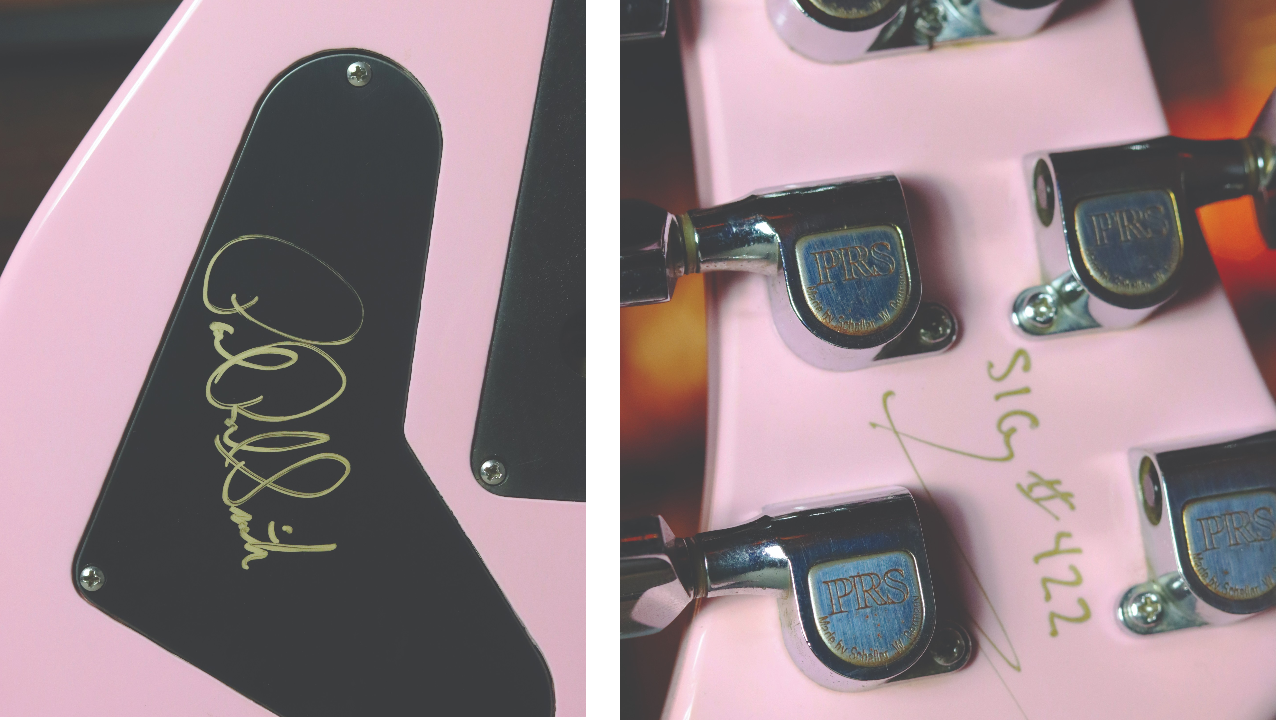
The two-way switch was wired for bypass in one direction, while the other took the signal through a 135-nanosecond delay line, a small rectangular component that effectively attenuated the high frequencies sent on to the output jack.
The intention was to overcome the potential harshness of a guitar run through a wireless system or a buffered signal chain, but some later players found the “sweet” setting rather dull and lifeless, and PRS replaced this switch with a conventional tone control in 1991.
Examples of recorded PRS tones can be found all over the place, and the company has comprised a roster of artists to rival those of Fender and Gibson.
In addition to the names already mentioned, proponents of various renditions of the classic PRS sound include Dickey Betts, David Grissom, Mark Tremonti, Orianthi, Dave Navarro, and a host of other pro players far too numerous to mention. As for the “classic” PRS sound, the chameleon-like versatility of these guitars makes it impossible to confine that to any easy definition.
Essential ingredients
• Asymmetrical double-cutaway design
• Solid mahogany body and neck with Brazilian rosewood fingerboard
• Carved Artist-grade figured-maple top, bird inlays
• Floating six-point milled PRS-Mann vibrato system
• PRS Treble and Bass humbucking pickups
• 25-inch scale length with 24 medium-jumbo frets
• Master volume, five-way rotary selector, Sweet Switch and three-way toggle switch
Dave Hunter is a writer and consulting editor for Guitar Player magazine. His prolific output as author includes Fender 75 Years, The Guitar Amp Handbook, The British Amp Invasion, Ultimate Star Guitars, Guitar Effects Pedals, The Guitar Pickup Handbook, The Fender Telecaster and several other titles. Hunter is a former editor of The Guitar Magazine (UK), and a contributor to Vintage Guitar, Premier Guitar, The Connoisseur and other publications. A contributing essayist to the United States Library of Congress National Recording Preservation Board’s Permanent Archive, he lives in Kittery, ME, with his wife and their two children and fronts the bands A Different Engine and The Stereo Field.
Guitar Center's Guitar-A-Thon is back, and it includes a colossal $600 off a Gibson Les Paul, $180 off a Fender Strat, and a slew of new exclusive models
"We tried every guitar for weeks, and nothing would fit. And then, one day, we pulled this out." Mike Campbell on his "Red Dog" Telecaster, the guitar behind Tom Petty & the Heartbreakers' "Refugee" and the focus of two new Fender tribute models










